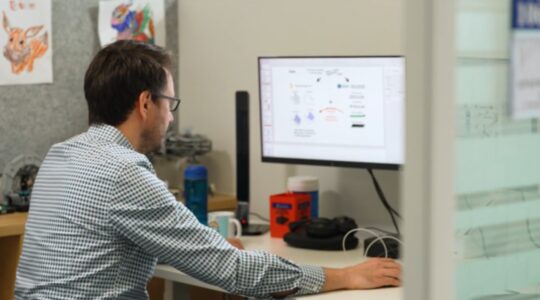Small magnetic robots, which can be used in ant-like swarms, have been developed to overcome hurdles individual robots encounter.
Associate Professor Jeong Jae Wie, from Hanyang University in Seoul, South Korea said the robots worked together like ants to achieve Herculean feats, including traversing and picking up objects many times their size.
In a study published in the Cell Press journal Device, Associate Professor Wie said the microrobot swarms, operating under a rotating magnetic field, could be used to take on difficult tasks in challenging environments that individual robots would struggle to handle, such as offering a minimally invasive treatment for clogged arteries and precisely guiding organisms.
“The high adaptability of microrobot swarms to their surroundings and high autonomy level in swarm control were surprising,” he said.
Associate Professor Wie said tests were carried out on how well microrobot swarms with different assembly configurations performed at a variety of tasks.
He said they found that swarms with high aspect ratio assembly could climb an obstacle five times higher than the body length of a single microrobot and hurl themselves, one by one, over an obstacle.
“A large swarm of 1000 microrobots with high packing density formed a raft that floated on water and wrapped itself around a pill that weighed 2000 times more than each individual robot, enabling the swarm to transport the drug through the liquid.
“On dry land, a robot swarm managed to transport cargo 350 times heavier than each individual, while another microrobot swarm was able to unclog tubes that resembled blocked blood vessels.”
Associate Professor Wie said scientists had become increasingly interested in studying how swarms of robots could collectively achieve goals, inspired by the way ants banded together to bridge a gap in a path or huddle in the shape of a raft to survive floods.
“Similarly, working together makes robots more resistant to failure — even if some members of the group fall short of the goal, the rest keep performing their programmed motions until enough of them eventually succeed.”
Read the full study: Magnetic swarm intelligence of mass-produced, programmable microrobot assemblies for versatile task execution.








